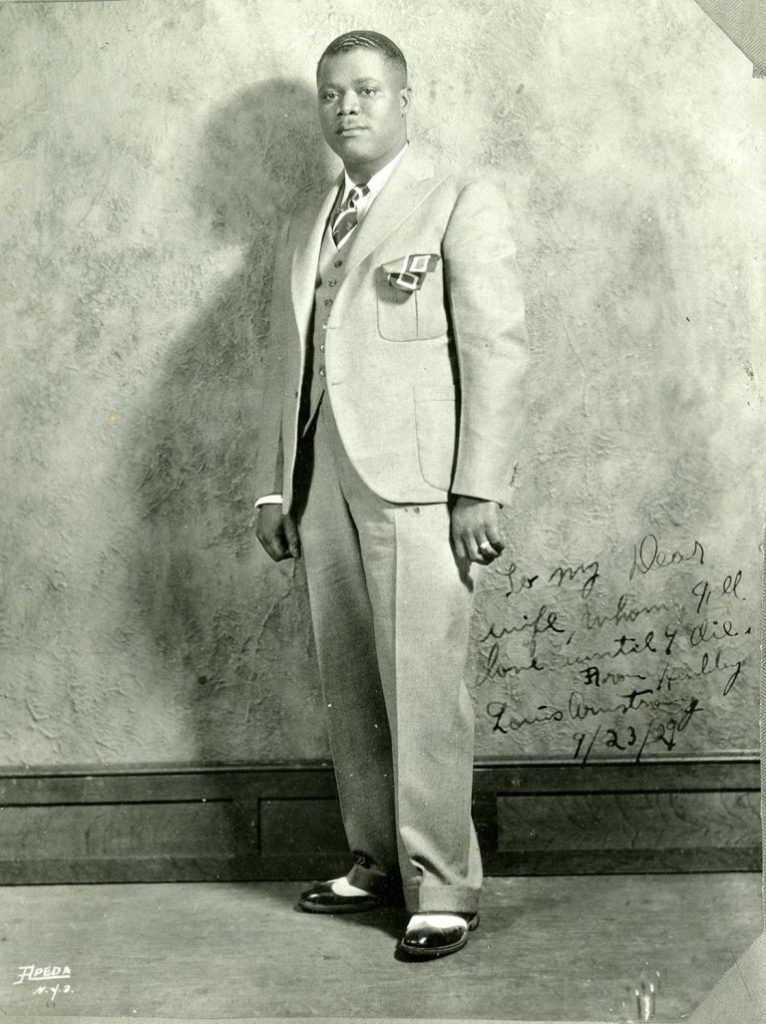Louis Armstrong told Larry L. King in 1967, “I got a simple rule about everybody. . . If you don’t treat me right—shame on you!”
He wasn’t a malicious man and it comes through in every second of his music, but it’s clear that Louis had no patience for those who weren’t fair or generous to him. It occurred to me, seeing a video performance of SO LONG, DEARIE from a 1964 Ed Sullivan Show, just how he gravitated to songs whose essential message was “You weren’t nice. I put up with it longer than I should, but now it’s over, I’m leaving, and my last act — as my feet move to the exit — will be to elaborate on your bad behavior for everyone to hear.”
In fairness, Louis wrote only one of these songs — his famous SOMEDAY YOU’LL BE SORRY — and there is a long tradition in popular music for songs that waggle an accusing finger at someone (AFTER YOU’VE GONE, YOU’VE BEEN A GOOD OLD WAGON are two that come immediately to mind, and, yes, Louis recorded both of them) but this was an emotional thread in his performing career.
JAZZ LIVES does not endorse vengeance as a way of life, but it does celebrate people’s coming to realize when they are not treated well and acting on it.

The 1942 Soundie version of (I’LL BE GLAD WHEN YOU’RE DEAD) YOU RASCAL YOU, with glorious Sidney Catlett, the remarkable Velma Middleton, and appropriate political commentary:
The grave, mournful NOW DO YOU CALL THAT A BUDDY? from the previous year:
a spinoff from the 1931 YOU RASCAL YOU, (YOU SO-AND-SO) YOU’LL WISH YOU’D NEVER BEEN BORN:
A terribly swinging series of threats and warnings, AS LONG AS YOU LIVE (YOU’LL BE DEAD IF YOU DIE):
The song that Louis said came to him in a dream, SOMEDAY (YOU’LL BE SORRY), in its first recording:
THROW IT OUT [OF] YOUR MIND, from a 1965 Connie Francis film, WHERE THE BOYS MEET THE GIRLS:
and the performance that began my train of thought, the 1964 SO LONG, DEARIE — where Louis packs so much music and comedy into slightly over two minutes, on the Ed Sullivan Show:
One could write a good deal about these performances as evidence that Louis felt betrayed at least one of his wives; male insecurity about the threat of more appealing lovers; a cultural tradition rooted in “the dozens,” where the insults may be good-natured or deadly; Louis and songwriters looking for new material that would be hits.
Or one could simply be moved, cheered, and amused by these variations on the theme of public rebuke for betrayal, deceit, and harm.
And one could quote Louis — to Richard Meryman in 1966: “. . . a baby or a little dog always knows the one who ain’t slapping him on the rear all the time.”
Thank you, Mister Strong. Again and again. Even when he appears to be wishing someone dead, we are having the time of our lives, as he was.
May your happiness increase!
































































 Something special and rare, I would suggest. If you’re interested in seeing the other signatures (including Buddy Rich, Charlie Barnet, Kid Ory, Barney Bigard, Louis, Velma Middleton, Tommy Dorsey and other luminaries), look for “15- RARE-Vintage-BIG BAND-AUTOGRAPHS-Jazz Legensa-SIGNED.” My man Agustin Perez Gasco helped me to find the working link, which is
Something special and rare, I would suggest. If you’re interested in seeing the other signatures (including Buddy Rich, Charlie Barnet, Kid Ory, Barney Bigard, Louis, Velma Middleton, Tommy Dorsey and other luminaries), look for “15- RARE-Vintage-BIG BAND-AUTOGRAPHS-Jazz Legensa-SIGNED.” My man Agustin Perez Gasco helped me to find the working link, which is